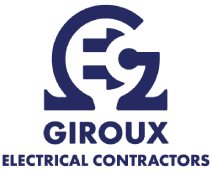Most of us put little thought into our home generators until we need them. Experiencing a power outage without a home generator can cause a lot of trouble, frustration, and potential catastrophes. If you happen to live in a climate with abundant precipitation and a location known for severe storms, a home generator can keep fresh running water, lights on, and heat or cooling in the house. If you have a basement, it can also protect your house from flooding by allowing your sump pump to continue working.
Appreciation of what a whole home generator does starts with understanding how it works. To better understand what a generator does, this article will review the basics of what home generators are and how they work. You will learn the basic components of a generator and what each does. And lastly, you will learn how a generator connects to a home.
The Basics
What is a Whole Home Generator
– Whole home generators can also be referred to as standby generators. They are powerful machines, with their own fuel source, that provide electricity to the home during power outages.
– Home generators keep the lights on, appliances working, outlets working, sump pumps and water wells operational. They also keep your heating and air-conditioning units functioning. Whole home generators keep the entire household running smoothly in the event of a power outage.
The Science Behind Generating Electricity
Electromagnetism
– Home generators utilize the principles of electromagnetism. Electromagnetism is the science of charge (positive and negative) and the forces and fields that are associated with the charge. By rotating a coil between the poles of a magnet, an electric current is generated.
– Generators need an outside source of fuel such as diesel, natural gas, or propane. The generator uses the fuel to rotate the armature, or copper coil, between the poles of a magnet. By moving between the poles, electricity will try to complete the circuit and induce a flow of electricity.
Parts of a Generator and their Function
Engine: The engine is the main component of the generator. This is the piece that must rotate the armature that instigates the electrical current.
Alternator: This piece of the generator converts the mechanical energy from the engine into electrical energy that the home can use.
Voltage Regulator: The voltage regulator is responsible for measuring and monitoring the voltage differences between two points in the electrical system. It ensures that the generator is providing the correct voltage of power to the home safely and efficiently.
Cooling System: The movement of the engine operation creates heat and therefore, the generator must have a cooling system.
Exhaust System: Due to the burning of fuel, exhaust gasses are created when the generator is running. There must be an exhaust system moving these dangerous gasses to a safe place.
Control Panel: Display panels provide interactive displays with controls and will also provide reports on the overall operation of the unit.
Automatic Transfer Switch: Also known as the ATS, the automatic transfer switch is the critical piece that automatically switches to the home’s generator when the power goes out. The ATS will also cut the power to the generator when the power is restored making it convenient and hassle-free for the home owner.
How Generators are Connected to the Home
Proper connection of the generator to the home is essential for safe and efficient operation. The general steps to connect a whole home generator are listed below. For your safety and peace of mind, hiring a professional electrician is recommended.
Site Prep: Before installation, the location of the generator should be decided on. It is most commonly placed by the electrical panel and close to the fuel source.
Mount the Generator: Commonly, generators are mounted to a concrete pad or a prefabricated base.
Fuel Connection: Fuel tanks, regardless of fuel type, need to be close to the unit and attached so that the generator can seamlessly transition on when needed. Fuel lines may even need to be buried.
Electrical Connection: The electrical connection is made between the automatic transfer switch and the electrical panel.
Wiring: The final piece to making the connection between the generator and the home is by wiring it all together. This is where the final connection between the ATS and the panel is made.
After a whole home generator is installed, you should test and inspect the unit for proper functioning. Once it is operating, proper maintenance is important to ensure that the generator runs when needed.
The Science and Security Behind Whole Home Generators
The understanding of how a whole home generator works and the important role each component plays helps to ensure your home remains safe and operational during power outages. Knowing the science behind how it works and the function of each component will help you detect potential issues and help ensure proper maintenance. The investment in a whole-home generator is not just for convenience, it’s about protecting your household from disruptions and potential disasters. A home generator is priceless when you need it. If you live in a climate that receives generous precipitation, heavy thunderstorms, or severe storms like nor’easters, a whole-home generator can keep you safe and protected in the worst of conditions. To secure a high level of protection, professional installation is key. If you are considering a whole home generator installation in Southborough, here at Giroux Electrical Contractors we are experienced and highly trained professionals who can properly connect, test, and maintain your generator. Have the peace of mind that you can keep the lights on in the worst of conditions.
